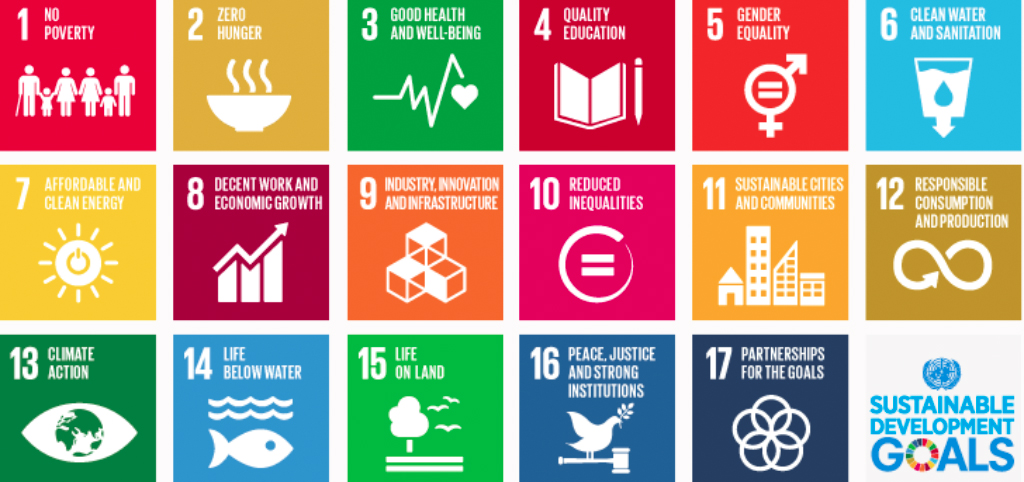THE KIMBERLEY PROCESS AND THE WORLD DIAMOND COUNCIL
IN SERVICE OF THE UN’S SUSTAINABLE DEVELOPMENT GOALS

Officially unveiled at the United Nations Conference on Sustainable Development in Rio de Janeiro in 2012, the Sustainable Development Goals (SDGs) have become the principle yardstick by which the business sector and others measure their success, or lack thereof, in serving society and the planet. It is within their context that the Kimberley Process and the work of the World Diamond Council are also are being judged.
The SDGs evolved from the eight Millennium Development Goals (MDGs), which were declared at a summit held at UN headquarters in New York September 2000, by the leaders of 189 countries. These were measurable objectives that ranged from halving extreme poverty and hunger to promoting gender equality and reducing child mortality, by the target date of 2015.
When, a decade and half later the results were tallied, they were impressive. Looking at a period of 25 rather 15 years, they showed that the number of people living in extreme poverty has declined by more than half over a 25-year period, falling from 1.9 billion in 1990 to 836 million. The number of out-of-school children of primary school age worldwide also fell by almost half, and gender parity in primary school has been achieved in the majority of countries. The mortality rate of children under five was cut by more than 50 percent since 1990 and maternal mortality rates had fallen by 45 percent worldwide. Furthermore, official development assistance from developed countries increased 66 percent in real terms from 2000 and 2014, reaching $135.2 billion.
“Without the private sector, sustainable development will remain only a distant dream. We are not asking corporations to do something different from their normal business; we are asking them to do their normal business differently.”
Kofi Anan, UN Secretary General, 1997-2006
2002 World Summit on Sustainable Development

The 17 SDGs were a commitment to finish by 2030 what the MDGs has started, tackling the most pressing challenges facing the world. They recognized that the ability to do so would require the efforts of governments, the international business sector and civil society. It is a constellation that mirrors the coalition of which the Kimberley Process is comprised.
Unlike the MDGs, which legend says were drawn up by a group of men in the basement of UN headquarters, to formulate the SDGs the United Nations organized the largest consultation process in its history. The result was the 17 general goals and 169 more specific targets.
The 17 SDGs are as follows:
- End poverty in all its forms everywhere.
- End hunger, achieve food security and improved nutrition, and promote sustainable agriculture.
- Ensure healthy lives and promote wellbeing for all at all ages.
- Ensure inclusive and equitable quality education and promote lifelong learning opportunities for all.
- Achieve gender equality and empower all women and girls.
- Ensure availability and sustainable management of water and sanitation for all.
- Ensure access to affordable, reliable, sustainable and modern energy for all.
- Promote sustained, inclusive and sustainable economic growth, full and productive employment, and decent work for all.
- Build resilient infrastructure, promote inclusive and sustainable industrialization, and foster innovation.
- Reduce inequality within and among countries.
- Make cities and human settlements inclusive, safe, resilient and sustainable.
- Ensure sustainable consumption and production patterns.
- Take urgent action to combat climate change and its impacts.
- Conserve and sustainably use the oceans, seas and marine resources for sustainable development.
- Protect, restore and promote sustainable use of terrestrial ecosystems, sustainably manage forests, combat desertification and halt and reverse land degradation, and halt biodiversity loss.
- Promote peaceful and inclusive societies for sustainable development, provide access to justice for all and build effective, accountable and inclusive institutions at all levels.
- Strengthen the means of implementation and revitalize the global partnership for sustainable development.




It is important to note that the SDGs interconnect, meaning success in one can positively engender success in others. Dealing effectively with the threat of climate change, for example, impacts positively on how we manage our natural resources, and our ability to provide food security. Achieving gender equality or better health helps eradicate poverty. And importantly from the perspective of the KP and WDC, fostering peace and inclusive societies assists in reducing inequalities and help economies prosper.
Consequently, the KP and WDC’s efforts to eliminate violence in the mining areas, and especially where artisanal miners are operating, assists in enabling the process of formalization of ASM, the improvement of working conditions, increased revenues for miners sustainable economic opportunities for surrounding communities, improved environmental management and capacity building in general. This aligns with the development program and contributes to the achievement of several of the SDGs, among them Goals 8, 9, 16 and 17.
Although they produce only 5 percent of rough diamonds by volume, there are 1 million individuals involved artisanal diamond mining and at least 5 million others who are dependent on the revenues they provide. Artisanal mining has the potential to help the economies of the countries and regions where it takes place, improving living conditions and creating sustainable economic both inside and outside the industry.






